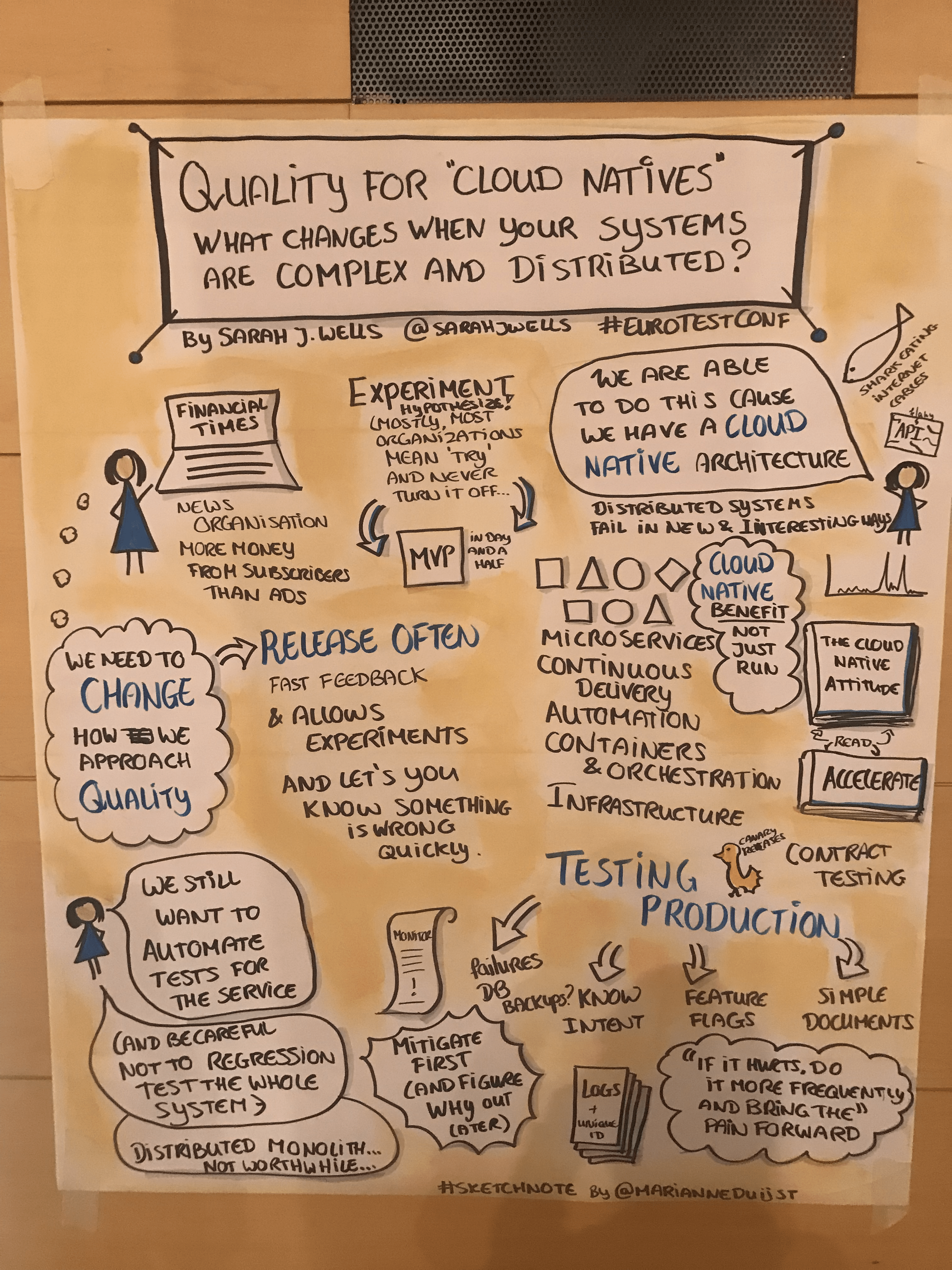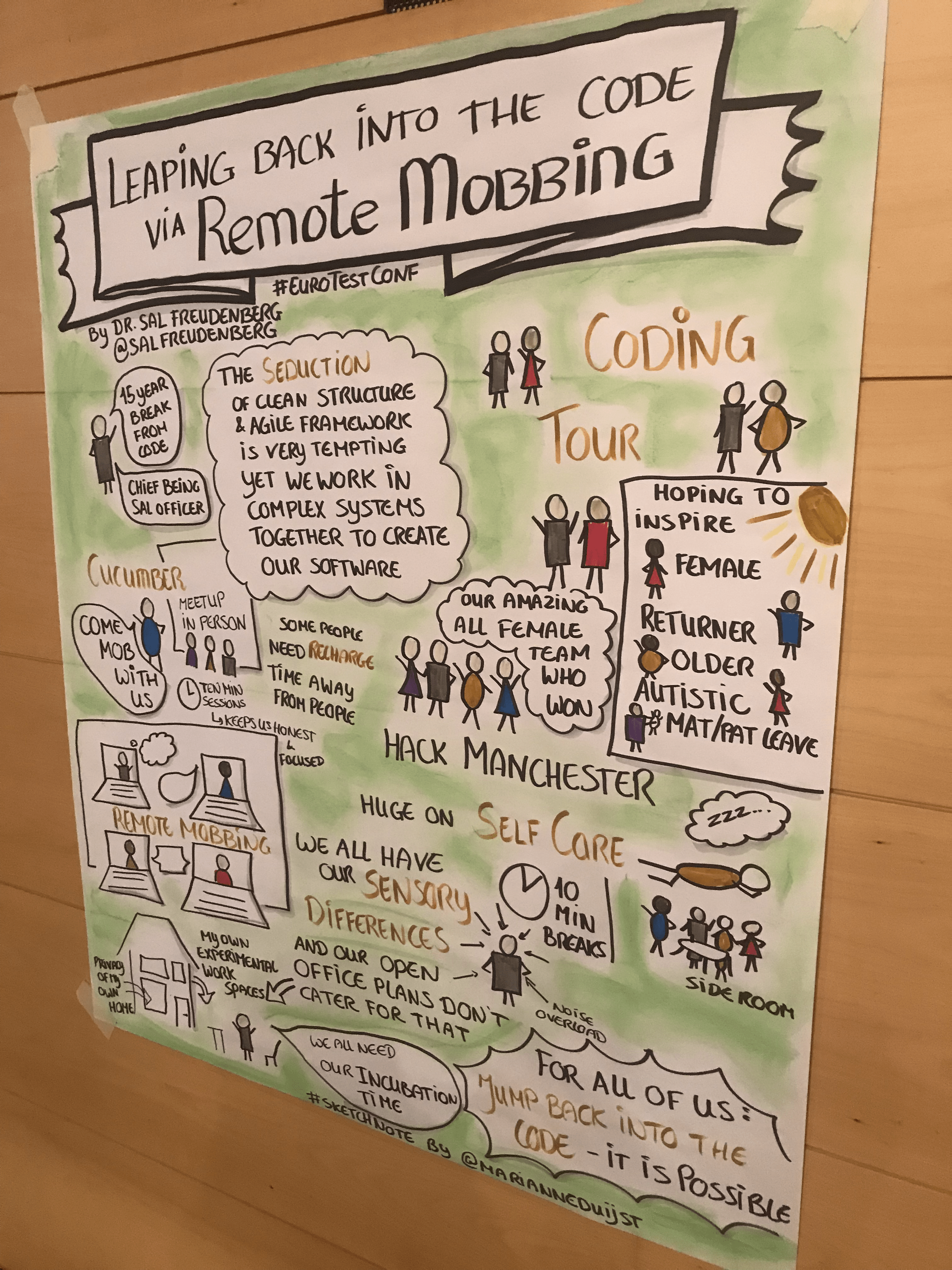Angie Jones - A Tale of Testing the Untestable
Feature: As an advertiser on a given social media platform, I want to target the types of users that my ad will be shown to.
Seems easy enough. Immediate tests that come to mind are around the advertiser being able to specify the types of users that should be targeted while creating the ad. Sure, this should certainly be tested and won’t be too difficult to validate. However, the challenge comes in when attempting to validate that users who meet such criteria are the only ones being served.
In this talk, Angie will share her story of trying to automate test scenarios that were essentially untestable due to various limitations and restrictions. Warning: this story is not filled with warm fuzzies and rainbows. No, it’s filled with challenge after challenge. Angie will discuss the technical challenges, and how coming up with solutions to these were still not enough. She’ll share the details of her harsh realization that the power to test the untestable was not in her hands alone, and that a “whole team” approach was the only way to truly be successful.
Slides: to be added soon…
Video: A Tale of Testing the Untestable
Sketchnote by Marianne Duijst:

Feature: As an advertiser on a given social media platform, I want to target the types of users that my ad will be shown to.
Seems easy...
show more
Feature: As an advertiser on a given social media platform, I want to target the types of users that my ad will be shown to.
Seems easy enough. Immediate tests that come to mind are around the advertiser being able to specify the types of users that should be targeted while creating the ad. Sure, this should certainly be tested and won’t be too difficult to validate. However, the challenge comes in when attempting to validate that users who meet such criteria are the only ones being served.
In this talk, Angie will share her story of trying to automate test scenarios that were essentially untestable due to various limitations and restrictions. Warning: this story is not filled with warm fuzzies and rainbows. No, it’s filled with challenge after challenge. Angie will discuss the technical challenges, and how coming up with solutions to these were still not enough. She’ll share the details of her harsh realization that the power to test the untestable was not in her hands alone, and that a “whole team” approach was the only way to truly be successful.
Slides: to be added soon…
Video: A Tale of Testing the Untestable
Sketchnote by Marianne Duijst:

show less
Ash Coleman - I Am Not A Cultural Fit - One Black Woman’s Account Through The Tech World
What builds and maintains our culture? Everyday we identify ourselves in groups that
categorize us based on practices, rather than shared principles. In the workplace, company
values define culture that is deeply rooted in hiring practices, incentive programs, and
management. Although a common approach, this is not the way diverse and inclusive culture
evolves. There is a loud call and demand for diversity today. So what do we do?
This is not a light topic. Diversity is often met with fear, frustration, defensiveness, and overall
exhaustion. So, let’s take a moment to listen. When you do, you will be provided an opportunity
to get answers that you may find incredibly difficult to ask.
Through this talk, Ash will take you on a journey. She will help you understand the impact of
spaces lacking diversity by sharing accounts of the structural barriers she faced when moving to
infiltrate the tech space. She will recall her struggles with assuming “like-mindedness” in order
to gain access to the opportunities in tech, as well as highlight what it means to feel included as
an “minority”. Most importantly, she will share stories of the residual climb she encounters to
be seen as a tech professional in today’s tech space.
“I am not a cultural fit. And likely never will be.” Ash will awaken you to the complexity around
culture and opportunities within tech, from the perspective of a Black Woman. And in
exchange, you will have the floor to ask the more difficult questions we are all bushing up
against. Am I making an impact on either side of this problem? What can I do to contribute?
Why should I care about diversity? In this talk you will be challenged to take a hard look at your
own participation in these communities and gain understanding of how to recognize issues and
support solutions.
Slides: I Am Not A Cultural Fit - One Black Woman’s Account Through The Tech World
Video: I Am Not A Cultural Fit - One Black Woman’s Account Through The Tech World
Sketchnote by Marianne Duijst:

What builds and maintains our culture? Everyday we identify ourselves in groups that
categorize us based on practices, rather than shared principle...
show more
What builds and maintains our culture? Everyday we identify ourselves in groups that
categorize us based on practices, rather than shared principles. In the workplace, company
values define culture that is deeply rooted in hiring practices, incentive programs, and
management. Although a common approach, this is not the way diverse and inclusive culture
evolves. There is a loud call and demand for diversity today. So what do we do?
This is not a light topic. Diversity is often met with fear, frustration, defensiveness, and overall
exhaustion. So, let’s take a moment to listen. When you do, you will be provided an opportunity
to get answers that you may find incredibly difficult to ask.
Through this talk, Ash will take you on a journey. She will help you understand the impact of
spaces lacking diversity by sharing accounts of the structural barriers she faced when moving to
infiltrate the tech space. She will recall her struggles with assuming “like-mindedness” in order
to gain access to the opportunities in tech, as well as highlight what it means to feel included as
an “minority”. Most importantly, she will share stories of the residual climb she encounters to
be seen as a tech professional in today’s tech space.
“I am not a cultural fit. And likely never will be.” Ash will awaken you to the complexity around
culture and opportunities within tech, from the perspective of a Black Woman. And in
exchange, you will have the floor to ask the more difficult questions we are all bushing up
against. Am I making an impact on either side of this problem? What can I do to contribute?
Why should I care about diversity? In this talk you will be challenged to take a hard look at your
own participation in these communities and gain understanding of how to recognize issues and
support solutions.
Slides: I Am Not A Cultural Fit - One Black Woman’s Account Through The Tech World
Video: I Am Not A Cultural Fit - One Black Woman’s Account Through The Tech World
Sketchnote by Marianne Duijst:

show less
Sal Freudenberg - Leaping back in to the code via Remote Mobbing
After a 10+ year break from developing I dipped a toe back into the coding world through a series of two-day stops on a “coding tour”. Before I kne...
show more
Sarah J. Wells - Quality for 'cloud natives' - what changes when your systems are complex and distributed?
The complexity in complex distributed systems isn’t in the code, it’s between the services or functions. And a lot of failures are hard to predict and maybe even hard to detect.
When your system is made up of multiple microservices or a bunch of lambdas and some queues, how do you test it? How do you even know whether it’s working the way you think it should?
Quality in these systems isn’t so much about testing up front: if you’re releasing 20 times a day, you can’t pay the cost of running full regression tests every time. You need to have a risk-based approach and focus your testing effort on the things where it really matters. And more importantly, you need to be able to quickly find out when things are going wrong, and quickly fix them.
Your production system is the only place the full complexity comes into play, so you should be doing a lot of your quality work there. Make sure you can find out about problems as early as possible and do as much ‘testing’ here as you can.
I’ll be talking about the importance of observability of your system - building in log aggregation, metrics and tracing so you can tell what’s up. I’ll also be talking about business-focussed monitoring, including synthetic monitoring.
I hope to show you why it’s worth dealing with the additional complexity of microservices over the monolithic approach of before, and give you some ideas about how to make your complex distributed systems easier to build and to run with high quality and stability.
Slides: Quality for ‘cloud natives’ - what changes when your systems are complex and distributed?
Video: Quality for ‘cloud natives’ - what changes when your systems are complex and distributed?
Article: Testing Complex Distributed Systems at FT.com: Sarah Wells Shares Lessons Learned by Ben Linders
Sketchnote by Marianne Duijst:

The complexity in complex distributed systems isn’t in the code, it’s between the services or functions. And a lot of failures are...
show more
The complexity in complex distributed systems isn’t in the code, it’s between the services or functions. And a lot of failures are hard to predict and maybe even hard to detect.
When your system is made up of multiple microservices or a bunch of lambdas and some queues, how do you test it? How do you even know whether it’s working the way you think it should?
Quality in these systems isn’t so much about testing up front: if you’re releasing 20 times a day, you can’t pay the cost of running full regression tests every time. You need to have a risk-based approach and focus your testing effort on the things where it really matters. And more importantly, you need to be able to quickly find out when things are going wrong, and quickly fix them.
Your production system is the only place the full complexity comes into play, so you should be doing a lot of your quality work there. Make sure you can find out about problems as early as possible and do as much ‘testing’ here as you can.
I’ll be talking about the importance of observability of your system - building in log aggregation, metrics and tracing so you can tell what’s up. I’ll also be talking about business-focussed monitoring, including synthetic monitoring.
I hope to show you why it’s worth dealing with the additional complexity of microservices over the monolithic approach of before, and give you some ideas about how to make your complex distributed systems easier to build and to run with high quality and stability.
Slides: Quality for ‘cloud natives’ - what changes when your systems are complex and distributed?
Video: Quality for ‘cloud natives’ - what changes when your systems are complex and distributed?
Article: Testing Complex Distributed Systems at FT.com: Sarah Wells Shares Lessons Learned by Ben Linders
Sketchnote by Marianne Duijst:

show less





